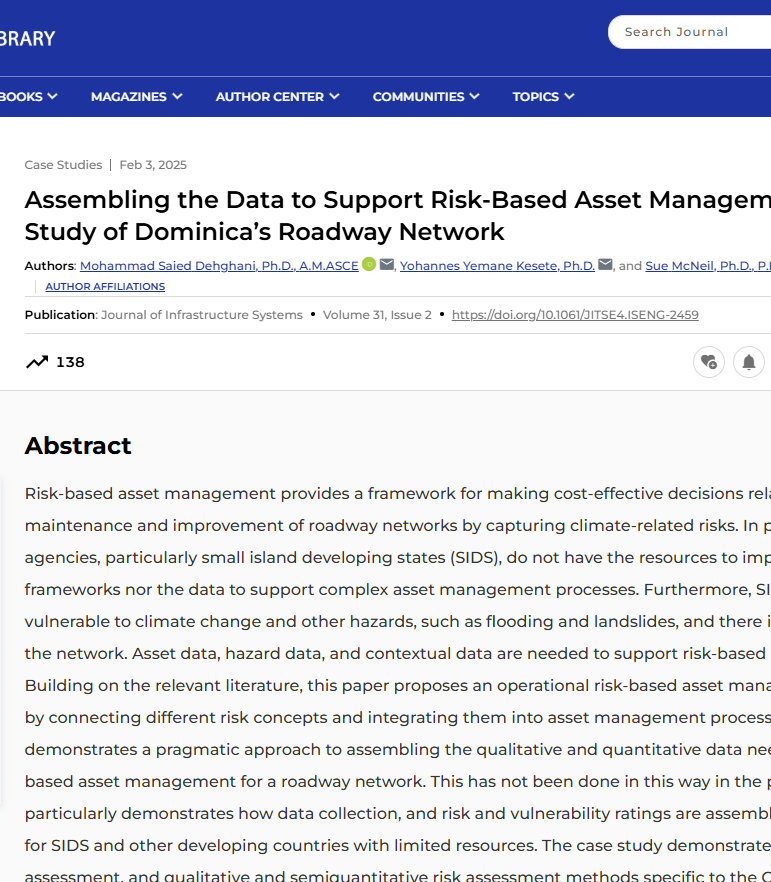Risk-based asset management provides a framework for making cost-effective decisions related to the maintenance and improvement of roadway networks by capturing climate-related risks. In practice, many agencies, particularly small island developing states (SIDS), do not have the resources to implement elaborate frameworks nor the data to support complex asset management processes. Furthermore, SIDS are particularly vulnerable to climate change and other hazards, such as flooding and landslides, and there is little redundancy in the network. Asset data, hazard data, and contextual data are needed to support risk-based asset management. Building on the relevant literature, this paper proposes an operational risk-based asset management framework by connecting different risk concepts and integrating them into asset management processes. The framework demonstrates a pragmatic approach to assembling the qualitative and quantitative data needed to support risk-based asset management for a roadway network. This has not been done in this way in the past. This application particularly demonstrates how data collection, and risk and vulnerability ratings are assembled, which is useful for SIDS and other developing countries with limited resources. The case study demonstrates the use of visual assessment, and qualitative and semiquantitative risk assessment methods specific to the Caribbean. Importantly, the data and models can be incrementally enhanced as an agency gains experience with the process, or more data becomes available. The case study provides a step-by-step demonstration of a practical application that is useful to a variety of agencies.
Assembling the Data to Support Risk-Based Asset Management: A Case Study of Dominica’s Roadway Network
June 1, 2025

